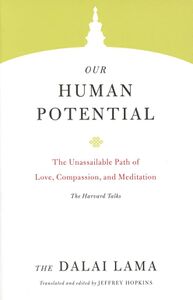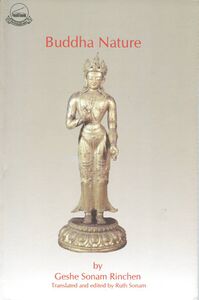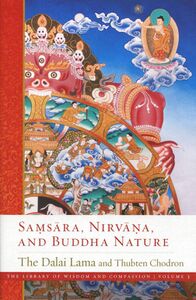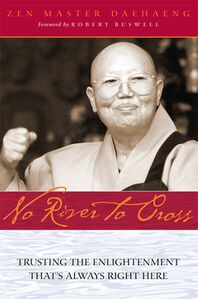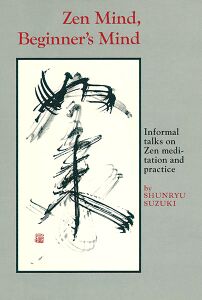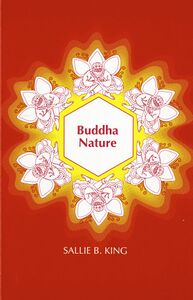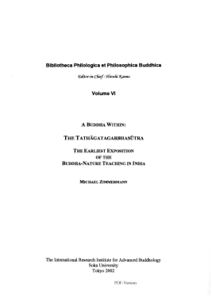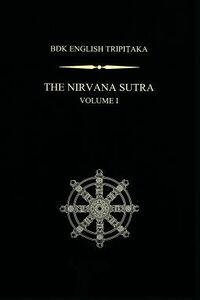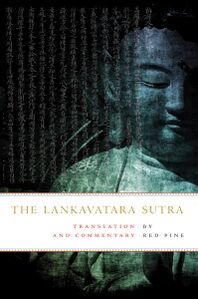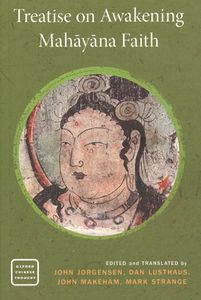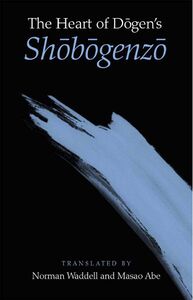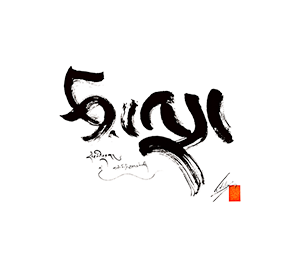Begin Discovering Your Buddha-Nature: Difference between revisions
From Buddha-Nature
((by SublimeText.Mediawiker)) |
((by SublimeText.Mediawiker)) |
||
| (14 intermediate revisions by the same user not shown) | |||
| Line 2: | Line 2: | ||
<div class="text-article tsdwiki-depth-1"> | <div class="text-article tsdwiki-depth-1 offwhite-bg mb-5"> | ||
<h1 class="text-center border-0 position-relative py-lg-5 mt-5 mb-0">{{#widget:DivWithBackImg | <h1 class="text-center border-0 position-relative py-lg-5 mt-5 mb-0">{{#widget:DivWithBackImg | ||
| Line 271: | Line 271: | ||
<div class="vienna-gradient pt-5 pb-4"> | <div class="vienna-gradient pt-5 pb-4"> | ||
<div class="position-relative pl-4 | <div class="h4 position-relative pl-4">Articles</div> | ||
<div class="row m-0 px-lg-5 py-4"> | <div class="row m-0 px-lg-5 py-4"> | ||
| Line 324: | Line 324: | ||
</div> | </div> | ||
<div class="position-relative pl-4 | <div class="h4 position-relative pl-4">Books</div> | ||
<div class="d-flex justify-content-center flex-wrap py-4"> | <div class="d-flex justify-content-center flex-wrap py-4"> | ||
| Line 354: | Line 354: | ||
{{FeaturedItem | {{FeaturedItem | ||
|page=Primary_Sources | |page=Primary_Sources | ||
|description=<div class=" | |description=<div class="h2 mt-2 mb-4 pl-4 border-bottom-rightfade">Study the Sources</div> | ||
<div class="pr-lg-5 pl-4">The seeds of buddha-nature teachings are sprinkled throughout the sutras and tantras of the Buddhist canon. A core group of scripture that initially taught buddha-nature known as the tathāgatagarbha sūtras date between the second and fourth centuries. These include the ''Tathāgatagarbhasūtra'', the ''Mahāparinirvāṇasūtra'', the ''Śrīmālādevīsūtra'' and several others. The famous ''Laṅkāvatārasūtra'' was also important for buddha-nature theory. In Tibetan Buddhism the late-Indian treatise ''Ratnagotravibhāga Mahāyānottaratantraśāstra'', or ''Gyü Lama'' as it is known in the Tibetan, serves as a major source for buddha-nature. In East Asia the ''Awakening of Faith in the Mahāyāna'' (大乗起信論) and the ''Vajrasamādhisūtra'' were the most influential treatises in spreading buddha-nature theory. And in Japan, the Zen master Dōgen (1200–1253), whose instructional lectures were collected in his ''Shōbōgenzo'', also wrote extensively on the topic of buddha-nature. All of these important buddha-nature texts have been translated into English by leading scholars and translators. Below is a selection of these works:</div> | <div class="pr-lg-5 pl-4">The seeds of buddha-nature teachings are sprinkled throughout the sutras and tantras of the Buddhist canon. A core group of scripture that initially taught buddha-nature known as the tathāgatagarbha sūtras date between the second and fourth centuries. These include the ''Tathāgatagarbhasūtra'', the ''Mahāparinirvāṇasūtra'', the ''Śrīmālādevīsūtra'' and several others. The famous ''Laṅkāvatārasūtra'' was also important for buddha-nature theory. In Tibetan Buddhism the late-Indian treatise ''Ratnagotravibhāga Mahāyānottaratantraśāstra'', or ''Gyü Lama'' as it is known in the Tibetan, serves as a major source for buddha-nature. In East Asia the ''Awakening of Faith in the Mahāyāna'' (大乗起信論) and the ''Vajrasamādhisūtra'' were the most influential treatises in spreading buddha-nature theory. And in Japan, the Zen master Dōgen (1200–1253), whose instructional lectures were collected in his ''Shōbōgenzo'', also wrote extensively on the topic of buddha-nature. All of these important buddha-nature texts have been translated into English by leading scholars and translators. Below is a selection of these works:</div> | ||
|image=https://commons.tsadra.org/images/thumb/c/c7/Maitreya_statue.jpg/431px-Maitreya_statue.jpg | |image=https://commons.tsadra.org/images/thumb/c/c7/Maitreya_statue.jpg/431px-Maitreya_statue.jpg | ||
| Line 363: | Line 363: | ||
}} | }} | ||
<div class=" | <div class="h2 position-relative pt-4 mb-4 pl-4 pb-2 border-bottom-rightfade">Buddha-Nature in Translation</div> | ||
<div class="d-flex justify-content-center flex-wrap py-4"> | <div class="d-flex justify-content-center flex-wrap py-4"> | ||
| Line 428: | Line 428: | ||
</div> | </div> | ||
<div class=" | <div class="h2 position-relative pt-4 mb-4 pl-4 pb-2 border-bottom-rightfade">More Scholarship on Buddha-Nature</div> | ||
{{FeaturedItem | {{FeaturedItem | ||
| Line 539: | Line 539: | ||
<div class="position-absolute h-100 w-100 opac-50 bg-light"></div> | <div class="position-absolute h-100 w-100 opac-50 bg-light"></div> | ||
<div class="position-relative | <div class="h2 position-relative pt-5 mb-4 pl-4 pb-2 border-bottom-rightfade">Discover More Resources</div> | ||
<div class="row m-0 px-lg-5 pt-0 pb-5"> | <div class="row m-0 px-lg-5 pt-0 pb-5"> | ||
| Line 648: | Line 648: | ||
</div> | </div> | ||
<div class=" | <div class="h2 pt-5 mb-4 pl-4 pb-2 border-bottom-rightfade">More on Buddha-Nature</div> | ||
<div class="row mx-3"> | <div class="row mx-3 pb-4"> | ||
<div class="col-lg-6 pr-0"> | <div class="col-lg-6 pr-0"> | ||
<div class="home-tile link-no-border pop- | <div class="tsdwiki-home-tile link-no-border tsdwiki-pop-off rounded over-hidden m-0"> | ||
<div class="row m-0" style="height: 100%;"> | <div class="row m-0" style="height: 100%;"> | ||
<div class="col-4 p-0 pecha-back-reduced-color"></div> | <div class="col-4 p-0 pecha-back-reduced-color"></div> | ||
<div class="col-8 px-4 pt-2" style="padding-bottom: 4rem;"> | <div class="col-8 px-4 pt-2" style="padding-bottom: 4rem;"> | ||
<div class="home-tile-heading border-0">Explore</div> | <div class="tsdwiki-home-tile-heading border-0">Explore</div> | ||
<div class="home-tile-text">Read and watch academic presentations, interviews, books, and articles.</div> | <div class="home-tile-text">Read and watch academic presentations, interviews, books, and articles.</div> | ||
<div class="bottom-label" style="right: 1.5rem; bottom: 1rem;">Go deeper</div> | <div class="bottom-label" style="right: 1.5rem; bottom: 1rem;">Go deeper</div> | ||
| Line 704: | Line 704: | ||
</div> | </div> | ||
</div> | </div> | ||
</div> | </div> | ||
Latest revision as of 21:43, 12 December 2024
Begin Discovering Your Buddha-Nature
Discover how buddha-nature is articulated in various Buddhist traditions by exploring multimedia, articles, books, and translations of primary sources from leading Buddhist teachers and academics. This page brings together a collection of curated resources designed to make the concept of buddha-nature understandable and accessible to a general audience.
Buddha-Nature in Tibet
Multimedia
On How Beginning Students Might Engage with Buddha-Nature Teachings by Ringu Tulku
Ringu Tulku talks about how beginning students might start to orient themselves toward buddha-nature teachings in practice. He explains that it is important to recognize that everybody has the seed of wisdom and compassion within them.
Articles
Books
Buddha-Nature in East Asia
Multimedia
Articles
Books
Study the Sources
The seeds of buddha-nature teachings are sprinkled throughout the sutras and tantras of the Buddhist canon. A core group of scripture that initially taught buddha-nature known as the tathāgatagarbha sūtras date between the second and fourth centuries. These include the Tathāgatagarbhasūtra, the Mahāparinirvāṇasūtra, the Śrīmālādevīsūtra and several others. The famous Laṅkāvatārasūtra was also important for buddha-nature theory. In Tibetan Buddhism the late-Indian treatise Ratnagotravibhāga Mahāyānottaratantraśāstra, or Gyü Lama as it is known in the Tibetan, serves as a major source for buddha-nature. In East Asia the Awakening of Faith in the Mahāyāna (大乗起信論) and the Vajrasamādhisūtra were the most influential treatises in spreading buddha-nature theory. And in Japan, the Zen master Dōgen (1200–1253), whose instructional lectures were collected in his Shōbōgenzo, also wrote extensively on the topic of buddha-nature. All of these important buddha-nature texts have been translated into English by leading scholars and translators. Below is a selection of these works:
Buddha-Nature in Translation
More Scholarship on Buddha-Nature
In an interview with the Tsadra Foundation, Karl Brunnhölzl discusses why one might study buddha-nature, the purpose of the buddha-nature teachings, and the concept of the innate luminosity of mind.
Karl Brunnhölzl's Seminal Work on Buddha-Nature
When the Clouds Part
"Buddha nature" (tathāgatagarbha) is the innate potential in all living beings to become a fully awakened buddha. This book discusses a wide range of topics connected with the notion of buddha nature as presented in Indo-Tibetan Buddhism and includes an overview of the sūtra sources of the tathāgatagarbha teachings and the different ways of explaining the meaning of this term. It includes new translations of the Maitreya treatise Mahāyānottaratantra (Ratnagotravibhāga), the primary Indian text on the subject, its Indian commentaries, and two (hitherto untranslated) commentaries from the Tibetan Kagyü tradition. Most important, the translator’s introduction investigates in detail the meditative tradition of using the Mahāyānottaratantra as a basis for Mahāmudrā instructions and the Shentong approach. This is supplemented by translations of a number of short Tibetan meditation manuals from the Kadampa, Kagyü, and Jonang schools that use the Mahāyānottaratantra as a work to contemplate and realize one’s own buddha nature. (Source: Shambhala Publications)
Brunnhölzl, Karl. When the Clouds Part: The Uttaratantra and Its Meditative Tradition as a Bridge between Sūtra and Tantra. Tsadra Foundation Series. Boston: Snow Lion Publications, 2014.
Brunnhölzl, Karl. When the Clouds Part: The Uttaratantra and Its Meditative Tradition as a Bridge between Sūtra and Tantra. Tsadra Foundation Series. Boston: Snow Lion Publications, 2014.;When the Clouds Part;Ratnagotravibhāga Mahāyānottaratantraśāstra;History of buddha-nature in India;History of buddha-nature in Tibet;Mahamudra;Ngok Tradition;Tsen Tradition;Asaṅga;ཐོགས་མེད་;thogs med;slob dpon thogs med;སློབ་དཔོན་ཐོགས་མེད་;Āryāsaṅga; Maitreya;བྱམས་པ་;byams pa;'phags pa byams pa;byams pa'i mgon po;mgon po byams pa;ma pham pa;འཕགས་པ་བྱམས་པ་;བྱམས་པའི་མགོན་པོ་;མགོན་པོ་བྱམས་པ་;མ་ཕམ་པ་;Ajita;Karl Brunnhölzl;When the Clouds Part: The Uttaratantra and Its Meditative Tradition as a Bridge between Sūtra and Tantra;'jam mgon kong sprul;Asaṅga;Maitreya;Sajjana;Vairocanarakṣita;bdud mo bkra shis 'od zer;Skyo ston smon lam tshul khrims;Karmapa, 8th
Alex Gardner served as the writer-in-residence for Tsadra Foundation's Buddha-Nature Project from 2017-2019. Read his introductory articles on the Ratnagotravibhāga and the history of buddha-nature theory.
Lopen (Dr) Karma Phuntsho is one of Bhutan’s leading intellectuals. He has finished monastic training in Bhutan and India before he pursued a M.St in Classical Indian Religions, and D.Phil in Oriental Studies at Balliol College, Oxford. Read his weekly blog on topics related to Buddhism and buddha-nature, visit his "Ask the Writer-in-Residence" page to get answers to your questions, or watch the ongoing video series "Conversations on Buddha-Nature."
Discover More Resources
The Literature
Texts and multilingual resources
expand
More on Buddha-Nature
